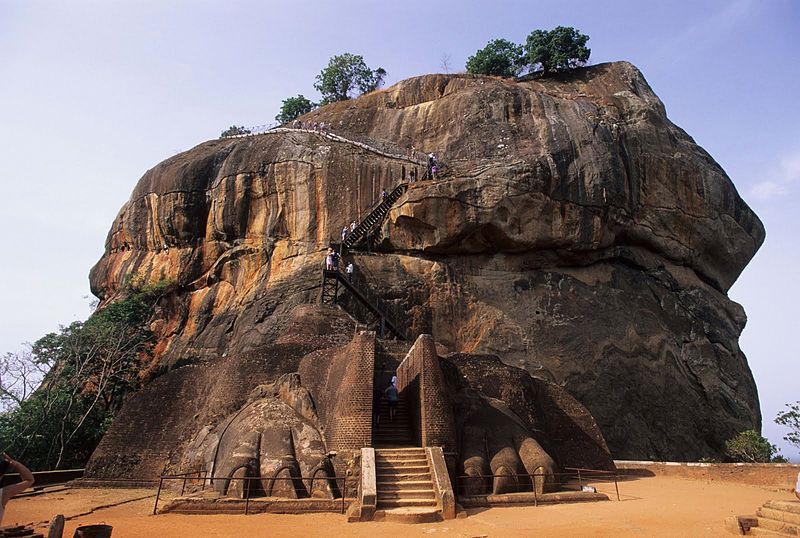
Sigiriya towers skywards from the central Sri Lankan plains in Matale district close to Dambulla town. It was once home to a wondrous kingdom. Sigiriya is one of the most visited global tourist attractions and if you’re looking for a hotel in Sigiriya, there is a wide range of accommodation to choose from. When in Sigiriya if its eco-luxury you are seeking then Jetwing Vil Uyana would be a good choice.
King Dhathusena’s (459-477) son by a non-royal consort, Prince Kashyapa, desirous of gaining Dhathusena’s crown and wealth, asked the King for his wealth and upon his request, the king showed him the Kala Wewa. Completely unpleased by this, Kashyapa walled his father in the Kala Wewa Bund and seized the kingdom from him. The rightful heir to the throne, Mugalan sought revenge and prepared to take the kingdom back from Kasyapa. In an attempt to flee from the army, Kasyapa built his kingdom on Sigiriya rock. Sigiriya offered panoramic views and was a perfect vantage point to watch for approaching enemies.
In 495 Prince Mugalan sought battle with King Kashyapa and facing defeat King Kashyapa slit his own throat with his sword. Gradually, the jungle claimed Sigiriya and it was only in 1833 that British Major Jonathan Forbes came upon it. In the 1890’s H. C. P. Bell conducted some research and excavations at Sigiriya. However, it was only in 1907 when John Still came upon Sigiriya and told the world about it that the ancient Kingdom became a global focal point of interest.
King Kashyapa’s inspiration for Sigiriya was ‘Alakamandawa’, the abode of God Kuvera. The Royal Palace was built atop the rock and entrance was through the mouth of a huge stone lion. The Rock Fortress derives its name from this lion and today, only the paws remain. Water gardens, ponds and fountains watered by an amazing feat of hydraulic engineering beautify Sigiriya. The incomparable Sigiriya frescoes are world famous. They depict damsels carrying flowers and opinions vary about their identity. The highly polished Mirror Wall contain graffiti throughout the ages. Today, Sigiriya is a UNESCO World Heritage Site within the Cultural Triangle of Sri Lanka and Sir. Arthur C. Clarke mooted Sigiriya as the ‘Eighth Wonder of the World’.
Roland Lefevre is a travel writer who specializes in creating features on leisure as well as business travel destinations across the globe. Google+
Related posts
HOT TOPICS
Archives
Categories
- Activities (824)
- Adventures (102)
- Dining (41)
- Events & Festivals (44)
- Kids Pools (6)
- Playgrounds (2)
- Restaurants (9)
- Theme Parks (30)
- Destinations (2,072)
- Family Travel Tips (729)
